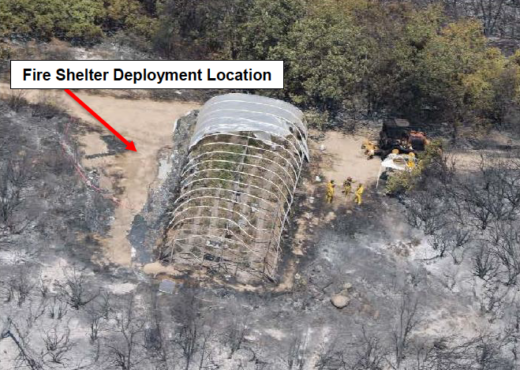Fire officials stress it's not common for private bulldozers to be used in the initial attack on a wildfire, but on that day, Cal Fire was battling over a dozen large fires throughout the state.
"When multiple large fires are burning, that's when competition for resources can occur," Cal Fire spokeswoman Janet Upton said, adding that the agency relies more on heavy-equipment contractors when fire activity increases.
That reliance brings its own set of dangers, according to Craig Peters, an attorney with the San Francisco-based Veen law firm, who specializes in heavy equipment and construction site injuries.
"Non-employees of Cal Fire who are called into work wildfires are under-trained and under-skilled for the specialized needs of fighting wildfires," Peters said in an email. "So long as this practice continues, there is high likelihood of unnecessary injuries and death occurring into the future."
Upton said the contractor involved in the Aug. 30 incident was trained appropriately, had extensive experience and was used by Cal Fire multiple times in the last five years. In fact, he last completed a fire line safety course for private contractors in March.
"It's not as if we just picked up labor on the side of the road," Upton said.
Representatives for Ellis Cattle Co. did not respond to a request for comment.
The operator's problems started not with the wildfire itself, but with his dozer.
After he began bulldozing a fire line on one flank of the blaze, the Cal Fire report says, a spot fire forced him to look for a safe place to retreat. As he attempted to drive to a small clearing adjacent to a greenhouse, a hydraulic line on the machine broke, spreading flames and smoke into the dozer's cab.
Meanwhile, the Cal Fire heavy equipment boss on the scene was trying to reach the dozer operator on the assigned tactical radio channel -- first to try to get the operator to assist firefighters threatened by the spot fire, then simply to try to determine the operator's whereabouts. He got no answer and began asking pilots fighting the fire from the air to look for the missing bulldozer.
Concern intensified after a helicopter was able to get a look from above.
"C528 reported that the dozer line led into flames and there was no sign of the dozer," the report says.
On the ground, the bulldozer driver tried, and failed, to put out the blaze in his machine's cab with a fire extinguisher. Both his cellphone and main radio were lost in the blaze. And now the driver had another problem: The blaze was rapidly advancing on him. He deployed an emergency fire shelter to escape the flames. After the blazed passed over him, he managed to use a handheld radio to alert fire crews about his position.
Firefighters and the heavy equipment boss found the operator just minutes later. He appeared weak, complained of coughing and dizziness, but managed to walk to an ambulance. He was treated at a local hospital and released the same evening.
Cal Fire's Upton points out that in the midst of a dangerous situation, the contractor's training kicked in: He did the right thing by finding a clearing and setting up a fire shelter.
But she says the search for the operator took time and energy away from battling the main fire.
"This is a clear instance of a lot of resources being taken away from the firefight to prioritize the search for this individual," Upton said.
Cal Fire plans to conduct a more extensive review of the incident that could lead to set of recommendations that would be used in future training.
The incident comes a year after Robert Reagan, a bulldozer operator, was killed, and John Tiersma, a water tender driver was seriously injured helping battle the Soberanes Fire.
Reagan's widow and kids filed a wrongful death lawsuit against Cal Fire, and Monterey Country prosecutors have filed criminal charges against his employer, Czirban Concrete Construction, for among other allegations, not providing workers' compensation insurance.
